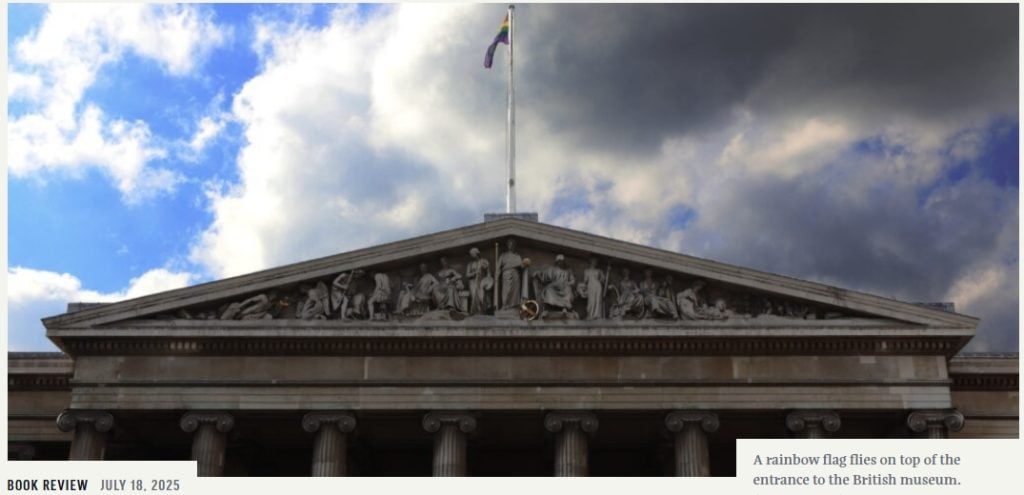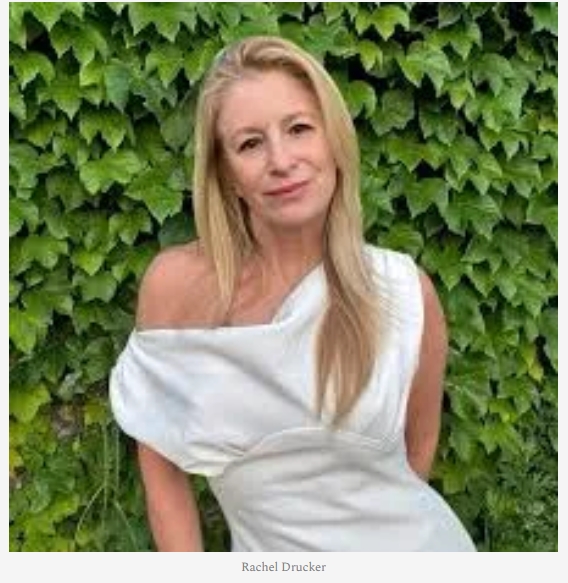By Theodore Dalrymple
Andrew Doyle is a satirist and comedian, but also a serious writer, with a doctorate in Renaissance literature. His most famous creation, a stroke almost of genius, is the character of Titania McGrath, a young female woke fanatic who ascribes all the ills of the world, and many others besides, to the patriarchy, imperialism, colonialism, sexism, capitalism, etc. Titania is a self-righteous, humourless, intolerant, ignorant know-all, whose opinions are uttered with ironclad self-confidence. It was so brilliantly done, and unfortunately so plausible, that at first some people wondered whether Titania McGrath was a real person.

I regret to say that this present book is not wholly satisfactory. It is too long and unfocused. The problem begins with the title and the sub-title: is the end of woke here and now, to come, or already complete? If the culture war went too far, how far was far enough, and who declared it in the first place? Answers to these questions are not forthcoming.
Those who are woke or anti-anti-woke claim that in essence wokeism was always a phantasm of the political right, that it never really existed, that it was a straw man conjured up by conservatives to reverse the social changes principally associated with the 1960s: but this is rather as if communists or anti-anti-communists were to claim that communism had never existed.
Wokeism is, of course, somewhat diffuse, but that does not prove its non-existence. A cloud exists, even if it cannot be precisely delimited, and the absence of precise delimitation is no reason for not referring to it. There may be no logical connection between climate catastrophism, for example, and the theory of gender, which denies the biological reality of sexual dimorphism, but it is a sociological fact that certain logically disconnected beliefs nevertheless tend to cluster together. It is not surprising that Greta Thunberg went straight from climate change activist to pro-Palestinianism, the main connection between these causes being that of her psychological need.
Doyle provides a succinct characterization of woke ideology. It is, he says, “An ideology underpinned by the postmodernist notion that our understanding of reality is produced in the context of linguistic and cultural frameworks, that knowledge is a construct of power wielded oppressively through language, and therefore censorship and other authoritarian measures are necessary to reshape society.”
This reshaping is, of course, to be carried out in the name of social justice, but entails the wielding of great, unopposed, and even totalitarian power by those who consider themselves enlightened—namely, the woke.
There is no central committee, or Lenin, of wokeism. It spreads not by overall design, but like an epidemic disease. Universities are foci of infection, and just as epidemics spare certain parts of the population, relatively speaking, so wokeism is like the measles of the educated. It is precisely because there are now so many of them that it affects every level from subeditor to government minister.
Doyle is convinced that wokeism is in its death throes. He might be right, but I am not convinced. The whirligig of time brings in his revenges, and no political victory is final. Certainly, the election of Donald Trump was a severe blow to wokeism, but he will not be president forever, and if his presidency should end in disaster, whether caused by him or not, a president of a very different stripe might be elected. If so, some form of wokeism might be resuscitated (we have already seen Zohran Mamdani chosen as Democratic candidate for the mayoralty of New York). Like the reports of Mark Twain’s death, those of the death of wokeism might well be exaggerated—albeit Mark Twain did eventually die.
The author does not explain why he thinks that wokeism is in its last throes, other than the election of Trump. Is it collapsing under the weight of its own contradictions, and is it its evident intellectual absurdities that will bury it?
An important question that the author does not address is whether wokeism has advanced as far as it has because of the opportunism or careerism of its supporters, or because of their true beliefs. Are the woke cynics or true believers? The two possibilities are not absolutely opposed because even opportunists may come truly to believe whatever doctrine suits their career. Most people, after all, are not out-and-out scoundrels, and few openly pursue their own interests by the conscious propagation of lies. Thus, they come in time to see the lies necessary for their personal advancement as abstract truths.
I suspect also that we have raised a generation of educated people who believe that any difference in outcomes between identifiable groups of people can only be accounted for by prejudice and illicit discrimination. If they believe this, they will remain susceptible to the siren song of wokeism for years to come. Thus, any dismantling of the bureaucratic apparatus inspired by absurd doctrines might prove only temporary.
There is much in this book about the arcana of the disputes between feminists and the transsexual lobby, and between the latter and homosexuals, which I think will not interest most readers. What future generations (if there are any) will make of the energy expended on questions raised by transsexualism in societies that face so many serious threats, economic, political, and strategic, I hesitate to predict. Perhaps the expenditure of such energy is best thought of as a displacement activity, like that of a mouse that washes its paws when confronted by a cat. We create problems for ourselves in order to avoid other problems.
Certainly, it is more difficult to avoid wokeness than might at first appear. The woke ideology, or sensibility, is inherently polarising and easily calls forth a mirror image of itself. The French television satirist, Cyril Hanouna, who has made a career of mocking woke sentiments, and who is therefore as dependent on the continuation of wokeism as Ibram X. Kendi, said, “I will defend all that is anti-woke,” as if any counterclaim to a false claim must therefore itself be true. And there is a temptation to respond to the 1619 Project by the elaboration of an official history equal and opposite to it, with an equal desire that it should be imposed.
There is a certain lack of subtlety in the author’s argumentation. In a chapter titled Strangled Muses, he says that woke censorship has strangled artistic expression, or at least crowded out all that is not woke, and I am in sympathy with this view. It is certainly true that publishers, for example, seem to demand wokeness even, or perhaps especially, for books for young children. The curators of museums now badger visitors with woke sentiments, and drag them into the labels of exhibits, bleeding, kicking, and screaming, as it were. On a recent visit to the British Museum, I noticed the gay pride, not the British, flag fluttering from the flagpole. Homosexuality has become a love that dare not dare not speak its name.
But it does not follow from the fact that woke censorship strangles artistic expression that all censorship does so. On the contrary, it is an awkward fact, seldom acknowledged, that the great majority of great art, including literature, has been produced under conditions of censorship. This does not by itself justify censorship, of course, for freedom is for freedom’s sake, not for great art’s sake. The end of society as a whole, moreover, is not only to produce great art.
But it is true that woke censorship strangles art in a peculiarly unpleasant and dangerous way, like North Korea’s, for it not only proscribes, it prescribes. Prescriptive censorship—the demand not only that some things must not be said, but that some things must be said—is the worst kind of censorship known. It leads not only to tedium, but to a sense of violence being done to one’s mind, because the things that must be said, and cannot be denied, are usually gross and obvious falsehoods. To be forced to accept and repeat falsehoods is worse than being merely prohibited from saying something.
This brings us to the question, also not discussed in this book, though obviously germane to it, of self-censorship. The anti-woke now talk of self-censorship as if it were self-evidently undesirable. The most minimal reflection will, or should, demonstrate that this is not so (here I assume that other people’s minds are like mine). It is perfectly obvious that one should not always say the first thing that comes into one’s head—the world is not a psychoanalyst’s couch—and that there are many times when certain truths should not be uttered. The way to be a bore, said Voltaire, is to say everything; the way to be a boor is to say the first thing that comes into one’s head. Nor does it follow from the fact that one is permitted to say x that one should say x, or that it is wrong to refrain from saying x.
There are difficult questions concerning publicly funded cultural institutions, which are subject to capture by woke ideology, that this book passes by. Of course, a purist might say that there should be no such institutions, that all should be privately funded, but this seems to me a counsel of ideology rather than of perfection. Besides, there will always be public monuments.
There is the problem, however, that the very rich of today, for one reason or another, do not appear to have the discrimination necessary to create worthwhile cultural institutions (I speak gross modo). But who, on the other hand, is to decide what is to be publicly subsidised, and on what grounds? Is it to be by show of hands and popularity, in which case the lowest common denominator will usually win? Or is it to be by direction of the cognoscenti, a knowledgeable elite that sets itself up in distinction to the hoi polloi, that as we have seen, is susceptible to extreme ideological capture?
The greatest harm done by wokeism is its destruction of cultural unselfconsciousness and its transformation of so many of us into ideologists or counter-ideologists. Henry Clay Frick, for example, did not have to agonise over what great art was, or under what conditions it was produced; he collected it, to the great benefit of New Yorkers and others. And this was true, pace the multiculturalists who complain of Eurocentrism, of the collectors of non-European art.
The author is not over-optimistic about a post-woke world. He says, “A happy ending is out of the question, but perhaps we might settle for a tolerable one”: that is to say, a world in which ignorant (and ideologised) armies do not clash by night.
First published in Law and Liberty
 The Western workplace and media is infested with virulent anti-males (or for that matter anti-anything) and of course their messages filter down throughout our culture.
The Western workplace and media is infested with virulent anti-males (or for that matter anti-anything) and of course their messages filter down throughout our culture.
 But as this duel enters the public domain, I think the university presidents are kind of worried because they know what they’ve been doing. We’ve discussed that.
But as this duel enters the public domain, I think the university presidents are kind of worried because they know what they’ve been doing. We’ve discussed that.


 A demonstration outside the hotel was called last Sunday evening. I saw reports on X and it was peaceful and orderly. Except the Stand up To Racism branches of Waltham Forest and Harlow (Essex new town to the north) mustered a crew of about 30 people at a few hours notice to challenge “Fascists in Epping attacking asylu mseekers using vile racist sentiments .. .”
A demonstration outside the hotel was called last Sunday evening. I saw reports on X and it was peaceful and orderly. Except the Stand up To Racism branches of Waltham Forest and Harlow (Essex new town to the north) mustered a crew of about 30 people at a few hours notice to challenge “Fascists in Epping attacking asylu mseekers using vile racist sentiments .. .” Another demonstration was called for last night. Antifa/UAF/SuTR had longer to organise and advertised further across London. Meet at Epping Station at 5.30. Stop the Far Right!
Another demonstration was called for last night. Antifa/UAF/SuTR had longer to organise and advertised further across London. Meet at Epping Station at 5.30. Stop the Far Right!
 It’s in the wider Los Angeles area, in Ventura County. And ICE went there. Of course, as it happens now, people within the government, the bureaucracy, tip off protesters. So as soon as ICE got to the pot farm, there were people. The usual crowd: academics, leftists, Latino organizers that are radical.
It’s in the wider Los Angeles area, in Ventura County. And ICE went there. Of course, as it happens now, people within the government, the bureaucracy, tip off protesters. So as soon as ICE got to the pot farm, there were people. The usual crowd: academics, leftists, Latino organizers that are radical.
 nature that Peeping Toms would have if they were not obsessed by vicarious sexuality. People are apt to conduct conversations in the back of a taxi as if the drivers were deaf or inanimate. And no one is afraid to tell a taxi driver what he really thinks. In anonymity, there is truth.
nature that Peeping Toms would have if they were not obsessed by vicarious sexuality. People are apt to conduct conversations in the back of a taxi as if the drivers were deaf or inanimate. And no one is afraid to tell a taxi driver what he really thinks. In anonymity, there is truth. before battle began, abandoning cities and villages without resistance and effectively handing them to the enemy “on a silver platter.” It was, in his view, a collective failure – political, military, and moral.
before battle began, abandoning cities and villages without resistance and effectively handing them to the enemy “on a silver platter.” It was, in his view, a collective failure – political, military, and moral.